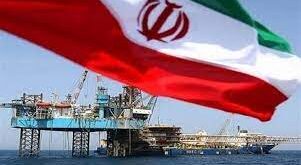After months of persistent concerns that global economy will suffer from a heated U.S.-China trade war. leading to lower oil demand growth in the world. renewed hopes that an agreement could be reached instilled optimism in market participants last week.
Oil prices rallied on Friday to their highest in three months and the highest so far this year. with Brent Crude reaching $65 a barrel and WTI Crude exceeding $55 per barrel.
A possible deal between the two biggest economies in the world would drive higher economic activity and could lead to higher energy demand and energy prices. Phil Flynn. senior energy analyst at The PRICE Futures Group and a Fox Business Network contributor. writes.
Higher energy prices will lead to higher gasoline prices in the U.S.. but slightly higher prices at the pump mean that the economy and people prosper and the economic prospects are brighter. Flynn argues. noting that we shouldn’t root for a no-deal in the U.S.-China trade talks.
“A higher price of gasoline may reflect a booming U.S. and global economy.“ said Flynn.
Last week. oil prices were supported by hopes that a breakthrough in the trade talks could be reached. by larger-than-expected Saudi oil production cuts as part of the OPEC+ deal. and by restricted oil supply from Iran and Venezuela. due to the U.S. sanctions.
While supply constraints are set to push oil prices higher. the ultimate driver of oil prices will be demand. Flynn said.
A U.S.-China trade deal could ease worries about economic slowdown and raise global trade and economic activity. thus lifting energy and oil demand.
Early this week in Asian trade. crude oil futures and equities firmed up. driven by optimism that a U.S-China trade deal could be reached.
After talks in China last week. the U.S. and China said they would resume negotiations in Washington this week. boosting bullish sentiment in markets.
“We feel we have made headway on very. very important and difficult issues.“ Associated Press quoted U.S. Trade Representative Robert Lighthizer as saying on Friday.
A day earlier. reports emerged that U.S. President Donald Trump was weighing pushing back the March 1 deadline for a deal. that is a possible start of imposition of more tariffs on Chinese imports. by 60 days.
On Saturday. President Trump tweeted that “Trade negotiators have just returned from China where the meetings on Trade were very productive.“ following up on Sunday with “Important meetings and calls on China Trade Deal. and more. today with my staff. Big progress being made on soooo many different fronts!“
If the U.S. and China manage to avoid a trade war with a deal of any sort that would drive up economic activity and market sentiment. energy and oil demand globally could turn out higher than currently predicted by analysts and organizations. Current forecasts cite the trade tension as the primary unknown of the pace of global economic growth. hence. the pace of oil demand growth.
Case in point: in its latest Monthly Oil Market Report last week. OPEC said that over the past two years. global oil demand has turned out to be higher than expected. supported by healthy economic activities. particularly in the OECD countries. Global oil demand rose by 1.47 million bpd in 2018. compared to an initial expectation of 1.26 million bpd. For 2019. demand growth is seen to slow down to around 1.24 million bpd. according to OPEC. which cites trade concerns as an uncertainty impacting oil demand growth this year.
A U.S.-China trade deal could raise gasoline prices but it could ultimately be the key driver of continued healthy global economic growth.
 Iran Energy News Oil, Gas, Petrochemical and Energy Field Specialized Channel
Iran Energy News Oil, Gas, Petrochemical and Energy Field Specialized Channel




